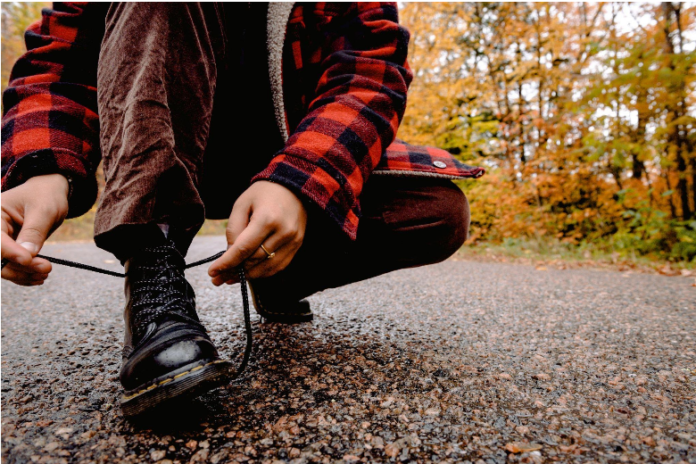Arch supports are an insert that may come with your shoes if you choose a high-quality brand like Taos. Arch supports can also be something you buy separately and add to your shoes.
Regardless, their importance shouldn’t be overlooked when you are choosing the best arch support sneakers.
Arch supports can reduce the pain you might experience and alleviate symptoms of common foot problems.
Understanding the Arch
To understand how insoles and arch supports are beneficial, you will need to know a bit about the structure of the foot itself.
The arch is designed so that it can bear your body weight and absorb shock when you’re walking and moving. While an arch is small, it takes on a lot of pressure. Your arches also give you the flexibility to move, including running and walking. Your arches help create balance, and they provide stabilization to you, including when you’re moving across different terrain.
Our feet were naturally designed to walk on surfaces that forgive, such as dirt and sand. Hard surfaces put a lot of stress on our feet and provide no contour. Those hard surfaces are a big part of why so many people deal with pain and foot issues.
Arch support can help provide that contouring support your foot needs but no longer gets in modern life. This is why people should consider arch support when shopping for new footwear.
The Benefits of Arch Supports
If you currently have a foot condition or chronic pain, arch supports can help you feel more comfortable. If you don’t have a chronic foot issue currently, arch support can help prevent one.
Arch support, first and foremost, distributes pressure evenly across your feet. When the pressure is even across your feet, it improves the alignment of your entire body. As a result, you might find other issues you thought were unrelated, like back pain, to improve.
Arch support can improve your posture and your sense of balance because of the even support.
You may find that when foot, leg, and back pain are lessened with the inclusion of arch supports in your shoes, you’re able to be more productive and focused on the day at hand.
When your arches are fully supported, then it helps prevent them from collapsing. When an arch collapses, it can lead to conditions like plantar fasciitis. This can especially be a problem for those who live in the best cities for walking, or places with streets built to support pedestrian traffic.
In general, a shoe with arch support protects your feet from the impact of your everyday life. This can help you not only maintain feet that feel and function better but also lessen pain and prevent issues throughout the body.
There’s another benefit of arch support as well. It helps prevent wear and tear on your shoes, so you can replace them less often.
Overall, an insole for arch support is something that can make a big difference in how you feel. It can also prevent conditions you have from worsening, and it can help you avoid future foot problems.
Selecting Insoles for Better Arch Support
Whether you are buying new shoes or selecting orthotics to complement a pair you already own, there are some things you need to know about finding good arch support. No two feet are the same, and different people have different needs as it concerns arch support.
Sizing
Just like shoes, insoles also come in sizes. The sizing of insoles should be similar to that of the sizing of your shoes. However, just like shoes, sizing is not always consistent across brands. Instead of following the size listed on the insole, it is a good idea to try to match the insole to the size of your feet.
Arch Type
You also need to account for arch height when buying insoles. In general, there are three arch heights: normal arches, high arches, and low arches. Low arches are what people commonly refer to as flat feet.
When you are shopping for arch support, you will want to consider your arch height. One way to get an idea of your arch height is to look at your wet footprint on a dry surface. The lower your arches are, the more of your feet you will be able to see in the print.
Placement
A full insole should replace the existing insole that came with the shoe. However, partial insoles are usually designed for placement on top of the existing insole. Most orthotics will have placement instructions that tell you if you should keep the existing insole and where to place the insert in the shoe. Make sure to read and follow these instructions.
Material
Insoles can be made from a wide array of materials. Some of the most common materials include foam, gel, molded plastic, leather, and cork. Different materials may offer different levels of support, and some may absorb shock better than others.
Foam tends to offer a nice balance between good support and shock absorption, and molded plastic is usually used for corrective insoles. Most wearers will need to try a few different types before they find the insole that offers the right levels of comfort, support, and function.
Activity
Selecting the right insole might also come down to the activity you plan to do in the shoes. Runners and other athletes might look for insoles that are designed for sports.
If you spend all day standing or walking at your job, you can also find insoles that are made to provide the right support and shock absorption for a day on your feet. If you are a person who works all day on your feet and then is active on the weekends, you might have different insoles you prefer for different pairs of shoes.
Proper arch support can do a lot to protect your feet. Even if you can’t find shoes that offer the arch support you need, buying insoles can be a good way to prevent issues that come with a lack of support at the arches. With that said, you do need to take the time to find the right insoles for your feet and the types of activities you plan to do in the shoes.

















